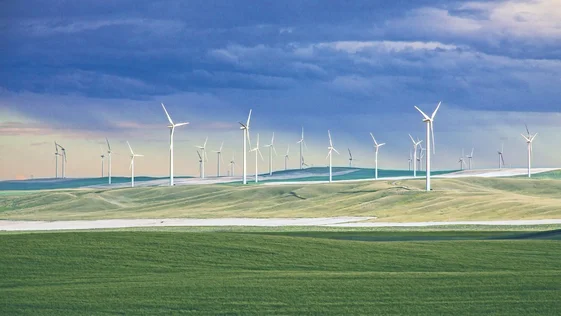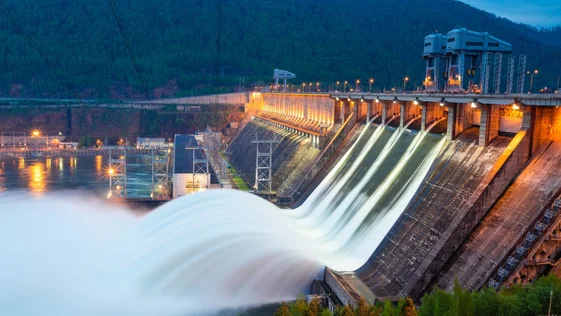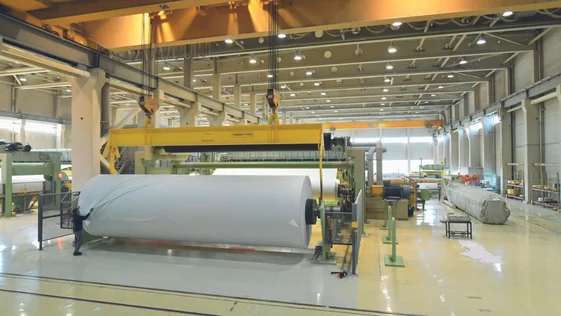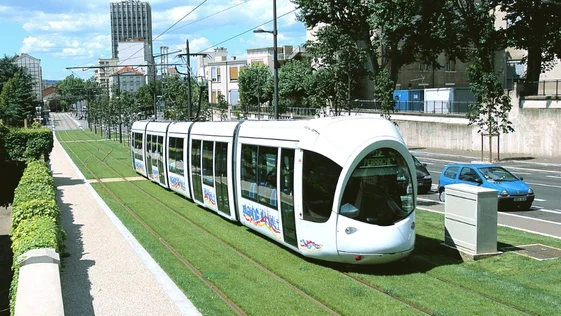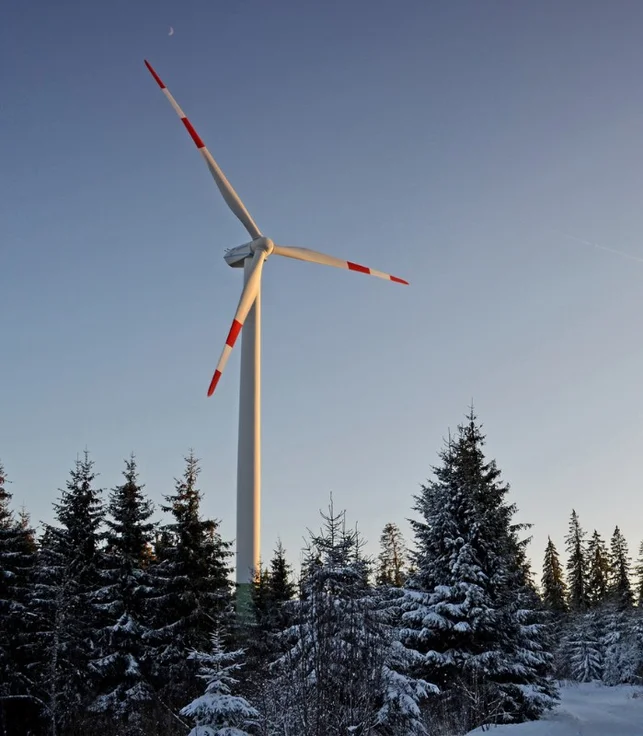
Mastering current transfer in extreme environments with Mersen
We create advanced electrical carbon solutions, tailored to overcome current transfer in extreme environmental challenges, so that industries operating under the most demanding conditions have access to the best in electrical continuity and safety.
-
Electrical carbon
Writing a sustainable future with electrical carbon solutions
Whereas in aerospace, rail transportation, hydro power or wind energy, the demand for sustainable and efficient current and power transfer solutions has never been more critical.
Electrical carbon plays a pivotal role in meeting these challenges, offering durability, conductivity, and environmental compliance.
With a deep understanding of market-specific needs and a relentless commitment to research and development, Mersen delivers electrical carbon technologies that power a more sustainable future, ensuring reliability, efficiency, and the highest standards of environmental stewardship. Through our expertise, we're not just responding to the challenges of today; we're engineering the solutions of tomorrow.
-
Our clients say it better
Engineering the future of energy
Integrating Mersen's current transfer and electrical carbon solutions was a game-changer for our operations. Mersen's expertise and advanced materials have not only met but exceeded our expectations. Their solutions have ensured our turbines operate at peak efficiency, with a notable reduction in maintenance needs and downtime.
Alex Thompson
Engineering Director at Global Wind Solutions
-
Definition
What is current transfer
Current transfer is the process within electrical systems that ensures the flow of electricity from its source to the various points where it's needed.
This process is fundamental to the operation of multiple sectors, including aerospace, rail systems, and renewable energy generation systems like wind turbines.
At its heart, current transfer relies on conductors, materials capable of carrying electrical current efficiently and effectively. These conductors must not only handle the electrical load but also withstand the environmental and operational stresses they encounter.
Mersen's current and power transfer systems are at the forefront of this field, offering superior conductivity, durability, and high thermal resistance. Our solutions are designed to optimize the current transfer process, ensuring that electrical systems operate with maximum efficiency and reliability.

-
Benefits
What are the benefits of electrical carbon in current transfer?
Electrical carbon benefits in current transfer include:
- great electrical conductivity, which is crucial for efficient power transmission across a wide range of applications, from rail, industry and energy solutions ;
- remarkable thermal resistance that ensures stability and reliability even under high temperatures, a common challenge in demanding environments such as rail systems and wind turbines ;
- durability: the material's inherent strength and resistance to wear extend the lifespan of components, reducing the need for frequent replacements and maintenance. This not only lowers operational costs but also contributes to sustainability by minimizing waste ;
- electrical carbon's versatility allows for customization in various applications, ensuring optimal compatibility and performance.
Mersen, leveraging its extensive expertise in advanced materials, has been at the forefront of developing and implementing electrical carbon solutions. Our products are engineered to meet the specific needs of each sector, delivering efficiency, reliability, and cost-effectiveness.
-
How does power transfer work?
Power transfer involves various methods and technologies to efficiently and safely distribute electricity across different environments and applications.
-
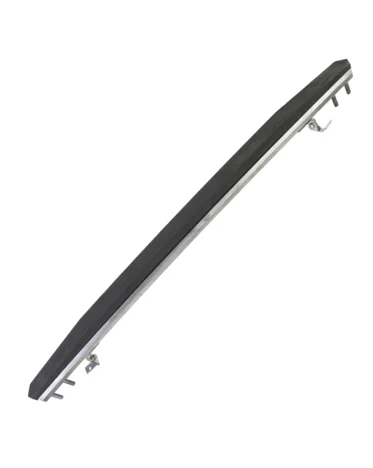
Current and power transfer
Rolling stock in the railway industry
Power transfer for rail vehicles (or rolling stock in the railway industry) involves a specialized system designed to deliver electricity from external sources to trains, enabling them to operate efficiently on tracks.
This system can vary, employing overhead lines or third-rail systems, where pantographs or Current Collector Device (CCD) shoes, respectively, collect power and distribute it throughout the vehicle. The use of electrical carbon in components like pantograph contact strips for rail vehicles and CCD shoes for current collectors is critical, ensuring smooth, uninterrupted power transfer even at high speeds or under varying environmental conditions.
Mersen's advanced electrical carbon solutions play a vital role in this context, offering optimized conductivity and durability to meet the rigorous demands of the railway industry, thereby enhancing the reliability and performance of power transfer systems for rail vehicles. -
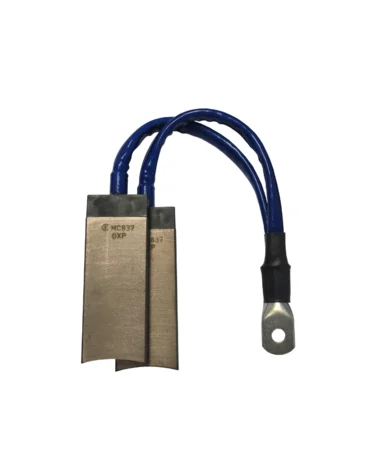
Current and power transfer
Wind energy systems
Power transfer in wind energy systems is a critical process where the kinetic energy captured by wind turbine blades is converted into electrical energy. This conversion happens through the turbine's generator, which then sends electricity through transformers to step up the voltage for transmission over the grid.
Electrical carbon solutions are integral to ensuring efficient and reliable power transfer within these systems. Carbon brushes and slip rings in wind turbines facilitate smooth electricity conduction from the moving parts to the stationary parts, minimizing losses and maximizing output.
Mersen’s expertise in electrical carbon products ensures that wind farms can rely on durable, high-performance components to sustainably generate and transfer power to meet our energy needs. -
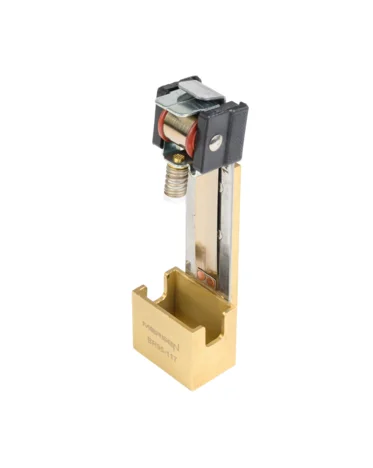
Current and power transfer
Hydroelectric systems
Power transfer in hydroelectric systems begins with the generation of electricity as water flows through turbines, turning them to produce electrical power. This generated electricity is then stepped up in voltage by transformers, making it suitable for long-distance transmission to the electrical grid. In such environments, where moisture and varying load demands are common, the durability and conductivity of electrical carbon components become critical. Mersen's electrical carbon solutions are specifically designed to address these challenges, ensuring efficient power transfer from the turbine generators to the grid.
-
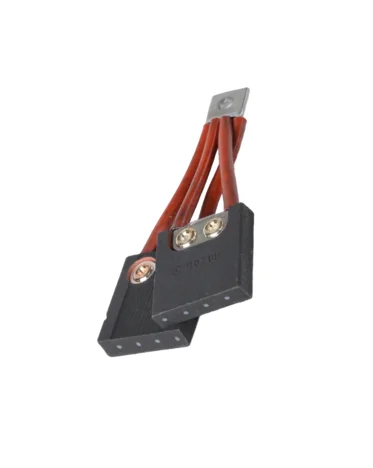
Current and power transfer
Aerospace
Current and power transfer for aerospace involves sophisticated systems that ensure electrical energy efficiently reaches all parts of an aircraft. This includes powering critical navigation, communication, and operational systems, all of which require extremely reliable and efficient electrical connections. Aerospace applications often utilize advanced electrical carbon products for their exceptional conductivity, thermal stability, and resistance to wear under extreme conditions.
Mersen’s expertise in electrical carbon solutions offers aerospace engineers components that are not only lightweight but also capable of withstanding the rigors of high altitudes and the vacuum of space.
-
-
Focus on electrical carbon
What is the role of electrical carbon in current transfer applications?
Electrical carbon plays a pivotal role in current transfer applications due to its superior conductive properties and resilience in diverse operating environments.
This material is essential in optimizing the efficiency and reliability of power delivery systems across various industries, from utilities to transportation and renewable energy.
What is the role of electrical carbon for electricity production and distribution?
Electrical carbon is indispensable for electricity production and distribution because of its exceptional conductive properties and resistance to degradation. It is integral in components like brushes for electric motors and generators, where its ability to conduct electricity efficiently minimizes energy losses and enhances overall system reliability. Additionally, electrical carbon's thermal stability and mechanical strength ensure it performs consistently under the thermal and electrical stresses typical in production environments.
Mersen's electrical carbon solutions are specifically engineered to meet these demands, providing industries with components that not only support robust energy distribution but also sustain longevity and reduce maintenance frequencies, thereby optimizing operational costs and productivity.
Why is electrical carbon important for aerospace?
Electrical carbon is crucial for aerospace applications due to its thermal stability, electrical conductivity, and resistance to environmental extremes. In aerospace, where reliability and precision are paramount, electrical carbon components such as brushes and contacts ensure consistent power delivery and minimal electrical interference across critical systems.
These properties are vital for the operation of various aerospace systems where any failure can have severe consequences. Mersen's advanced electrical carbon solutions are designed to meet these rigorous standards, providing aerospace technologies with the resilience to perform flawlessly in the challenging conditions.
What is the role of electrical carbon for hydroelectric systems?
In hydroelectric systems, electrical carbon’s robustness and excellent conductive properties are essential for transmitting power generated by water turbines. The material is used primarily in components such as sliding contacts and bearing protection, where it ensures a reliable connection and efficient electricity flow despite the moist and variable-load environment typical in hydro power plants.
Carbon material resistance to wear also makes it particularly valuable in these settings, prolonging the life of components and reducing maintenance needs. Mersen's electrical carbon products are tailored to meet the unique challenges of hydroelectric applications, enhancing the operational efficiency and longevity of these renewable energy systems.
What are the benefits of electrical carbon for wind energy?
Electrical carbon is essential in wind energy applications for its ability to enhance power transmission efficiency and equipment durability. Utilized in components like generator brushes and slip rings, electrical carbon ensures optimal electrical contact and minimal resistance, crucial for the fluctuating power output of wind turbines. Its resistance to wear and environmental resilience make it particularly suited to the demanding conditions of wind farms, which often face variable weather. By employing Mersen's electrical carbon solutions, wind energy operations can achieve not only higher efficiency but also longer lifespans and reduced maintenance costs, making wind power a more reliable and sustainable energy source.
-
Our products and solutions
Mersen’s range of current transfer equipment and electrical carbon solutions
Mersen’s range of current transfer equipment and electrical carbon solutions is designed to meet the rigorous demands of modern industries, ensuring optimal electrical performance and durability.
Carbon brushes for DC motor, wind, hydro and thermal power
Our carbon brushes are engineered for a variety of applications, ensuring exceptional electrical conductivity and minimal wear under diverse operating conditions.
- For DC motors, our brushes offer reliable commutation performance with excellent current density capabilities, making them suitable for all industrial applications.
- In the wind energy sector, our specially designed wind carbon brushes adapt to the variable electrical loads typical of wind turbines, enhancing power transfer efficiency and longevity.
- In the aerospace industry, our aeronautics carbon brushes are tailored to withstand extreme conditions while maintaining high reliability and safety standards essential for critical aircraft systems.
Each brush is crafted to meet specific industry needs, providing unmatched durability and performance in challenging environments.
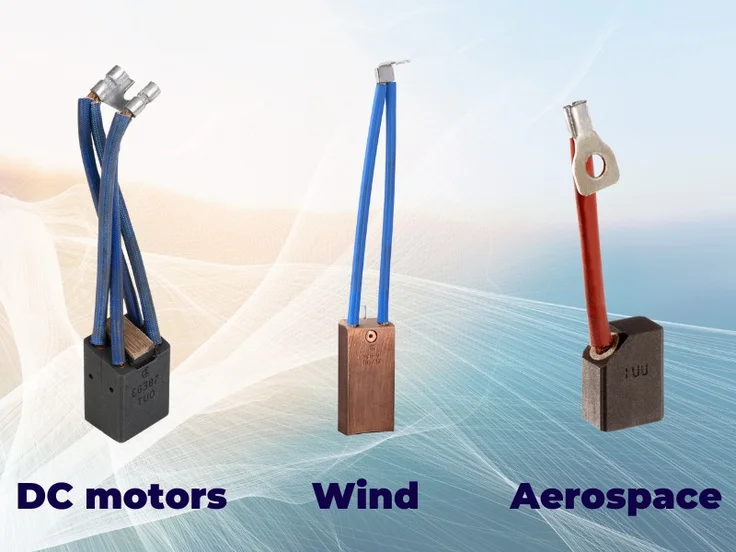
-
Brush-holders
Our brush-holders are meticulously designed to ensure precise and stable brush performance in a wide array of applications. These holders are engineered to maintain optimal brush pressure and alignment, crucial for the efficient transfer of electricity and extended brush life.
Whether in industrial electric motors, railway traction systems, or power generation setups, our brush-holders are built from robust materials that resist wear and corrosion. This design consideration guarantees consistent electrical contact and minimizes maintenance needs, enhancing the overall reliability and efficiency of the electrical systems they serve.
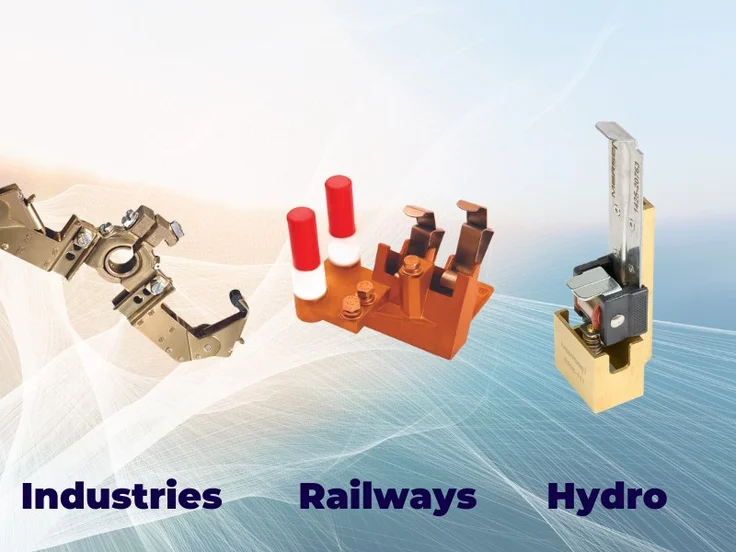
-
Slip rings
Mersen’s slip rings play a vital role in continuous power transfer in applications requiring rotational movement, such as wind turbines and rotating machinery. These devices facilitate the transmission of power and signals from a stationary structure to a rotating part, ensuring seamless operation without interruption.
Our slip rings are designed with specific metal materials to minimize electrical noise and wear, providing durable and reliable connections even under the most demanding conditions. This ensures long service life and reduces the need for frequent maintenance, crucial for industries where uptime is critical.
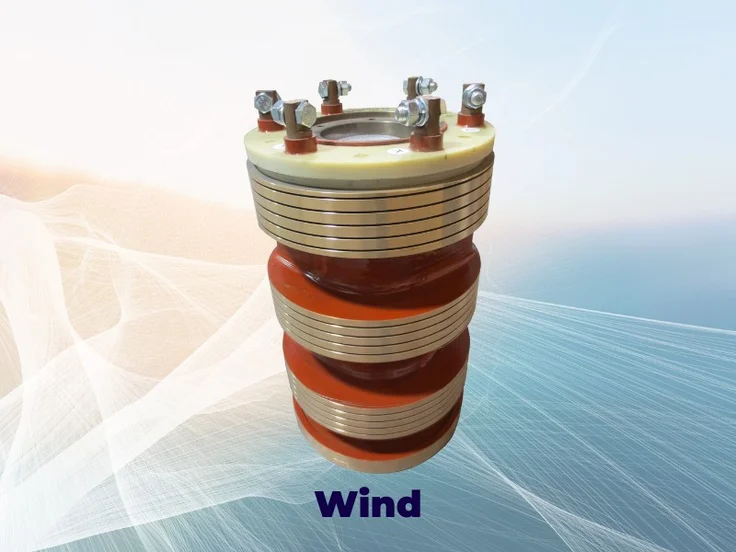
-
Pantograph contact strips for rail vehicles (rolling stock in the railway industry)
Mersen's pantograph contact strips are essential components in the power transfer systems of rolling stock in the railway industry, ensuring efficient and continuous electricity supply from overhead lines to trains. These contact strips are crafted from high-grade electrical carbon, designed to withstand the contact at any speed, current, electrical tension and environmental exposure encountered in rail applications.
Their durability and excellent electrical conductivity minimize wear and energy loss, significantly enhancing the overall efficiency of the train's electrical systems. Mersen’s pantograph contact strips are engineered for optimal performance, reducing maintenance intervals and improving the reliability of rail networks, facilitating smoother and more sustainable transit solutions.
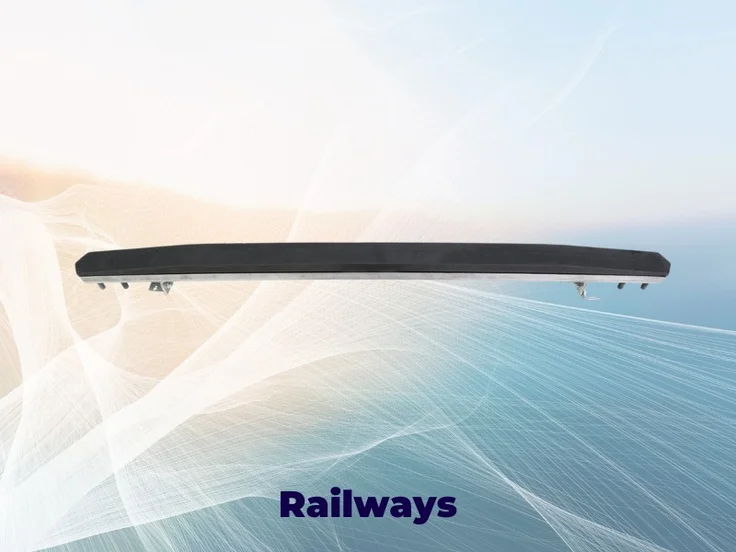
-
Carbon industrial current collectors
Mersen's industrial current collectors are engineered to provide superior electrical conductivity and wear resistance in various applications, including industrial motors and generators.
These current collectors are integral to ensure a reliable electrical connection across moving interfaces, crucial for maintaining consistent power transfer and operational efficiency. Manufactured from advanced carbon materials, our industrial collectors are designed to withstand harsh conditions while reducing maintenance requirements and operational costs.
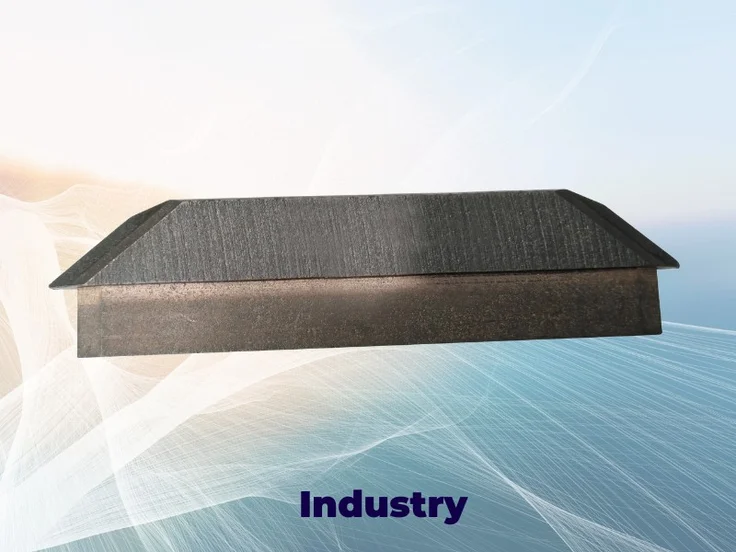
-
Current collector devices (CCD) shoes
Mersen’s current collector devices, or CCD shoes, are specifically designed to facilitate the transfer of electricity from fixed installations to moving vehicles, such as trams and electric buses. These devices ensure a secure and continuous electrical connection, critical for the smooth operation of urban transit systems.
Made from highly conductive and wear-resistant materials, Mersen’s CCD shoes stand up to the rigors of constant movement and varying environmental conditions, offering reliable performance and reduced maintenance needs. Their robust design not only improves the energy efficiency of transit vehicles but also contributes to a greener, more sustainable urban transportation network.
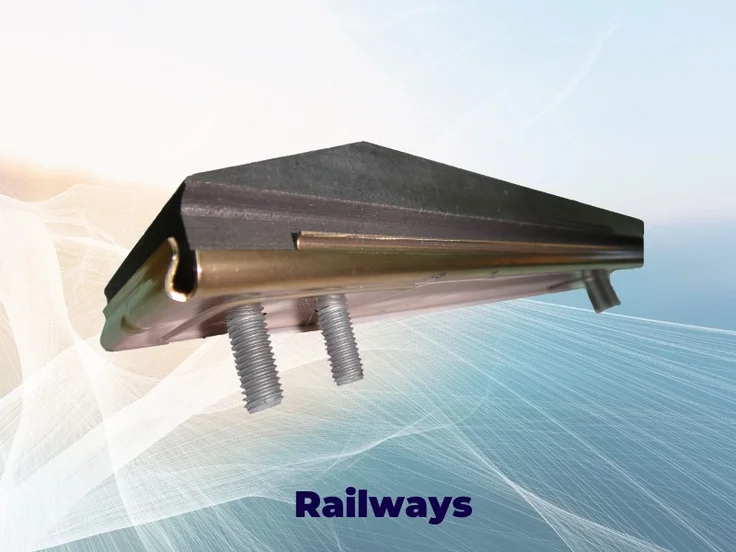
-
Demanding environments
How are current transfer systems adapted for extreme environments?
Mersen's advanced solutions are specifically designed to withstand the harsh conditions of extreme environments, incorporating robust materials and innovative technologies that maintain optimal performance in severe weather, high temperatures, and abrasive conditions.
Pantograph contact strips for power transfer for rail vehicles
In the demanding environment of rolling stock operations, pantograph contact strips made of carbon ensure reliable power transfer under extreme conditions. Mersen's pantograph contact strips are designed for resilience, capable of withstanding high speeds, temperature fluctuations, and exposure to outdoor elements.
These strips are engineered from advanced carbon materials that not only provide superior electrical conductivity but also exceptional durability against wear and tear. This makes them particularly effective in maintaining consistent contact and reducing energy loss, even in the most challenging operational scenarios.
Reliable slip rings for power transfer for wind
In the wind energy sector, reliable slip rings transfer power and data between the stationary and rotating parts of a turbine, and help maintain continuous operation. Mersen’s slip rings are engineered to withstand the extreme environmental conditions typical of wind farms, such as variable speed and current, moisture, and temperature variations.
These slip rings are designed with advanced materials that ensure minimal electrical resistance and maximum durability, enabling efficient energy transmission and reducing downtime for maintenance. By providing a consistent and reliable connection, Mersen’s slip rings help maximize the output and lifespan of wind turbines, contributing significantly to the efficiency and sustainability of wind energy production
-
Meet you specific demands
Which Mersen electrical carbon solution is best for your needs?
Our range of tailored solutions is designed to meet the specific demands of different industries, ensuring that you receive the most effective and efficient application for your unique operational needs.
Carbon brushes and brush holders for demanding electrical environments
For environments where electrical demands are high and system reliability is critical, Mersen's carbon brushes and brush holders are crucial for machines that require high conductivity and durability under stressful conditions, such as industrial motors and power generators.
Mersen's carbon brushes are made from materials that ensure optimal commutation and low wear rates, enhancing the efficiency and lifespan of electrical assemblies.
Similarly, our brush holders are designed to maintain precise brush alignment and pressure, ensuring optimal contact and minimal downtime.Whether operating under high temperatures, variable loads, or in corrosive atmospheres, Mersen’s solutions provide the resilience and performance essential for demanding electrical environments.
Pantograph contact strips for rail and tramway applications
Mersen's pantograph contact strips are specifically designed to maintain durable and efficient electrical connections between the overhead catenary system and the moving train or tram. Made from advanced electrical carbon materials, our pantograph contact strips ensure excellent conductivity and wear resistance, which are essential for the high-speed and varying environmental conditions typical in rail systems. This leads to smoother operations, reduced maintenance costs, and enhanced safety in urban transit and long-distance rail services.
Slip ring assemblies when managing high power transfers
Slip ring assemblies are built for applications that require the management of high power transfers, particularly in environments where continuous rotation or movement is involved, such as wind turbines and rotating machinery. These assemblies facilitate the seamless transmission of power across rotating interfaces, ensuring that systems operate without interruption or energy loss.
Designed with robust materials that withstand the demands of high electrical loads and environmental challenges, our slip rings design minimizes wear and maintenance requirements, enhancing the overall efficiency and longevity of the systems they serve, and making them ideal for managing high power transfers in dynamic applications.
Carbon shoes for enhanced durability in industrial applications
In industrial settings, where machinery must operate reliably under tough conditions, carbon industrial shoes are essential to handle high currents and frequent switching operations without degradation.
The superior electrical and thermal conductivity of Mersen’s carbon materials ensures efficient operation while resisting wear and reducing maintenance needs.
This durability is crucial in preventing downtime and extending the lifespan of equipment in sectors such as manufacturing, processing, and energy production, where consistent performance is critical.Wind turbine grounding solutions
Grounding solutions protect wind turbines from lightning strikes and other electrical hazards. Utilizing advanced electrical carbon technology, our grounding solutions ensure a reliable path for electrical discharges to travel safely to the ground, preventing damage to the turbine's sensitive electronic systems. This is crucial for maintaining the functionality and extending the service life of wind turbines, which are often exposed to harsh environmental conditions.
-
With over a century of expertise and a commitment to advancing technology and environmental sustainability, Mersen stands out as a leader in providing high-performance solutions tailored to meet the dynamic demands of modern industries.
Why choose Mersen for your current transfer equipment?
-

Advanced materials for current transfer
Electrical carbon solutions
Mersen's commitment to advanced materials for current transfer is exemplified by our sophisticated electrical carbon solutions, which are at the forefront of conductivity technology.
These materials are engineered to ensure exceptional performance, offering superior electrical conductivity, thermal stability, and resistance to wear and environmental stress. Ideal for a variety of applications — from industrial motors and aerospace components to renewable energy systems — Mersen’s electrical carbon products reduce maintenance needs and enhance efficiency.
By incorporating state-of-the-art materials into our solutions, we help businesses optimize their operations and minimize operational disruptions, ensuring that our clients receive not only products but also long-term value and performance. -
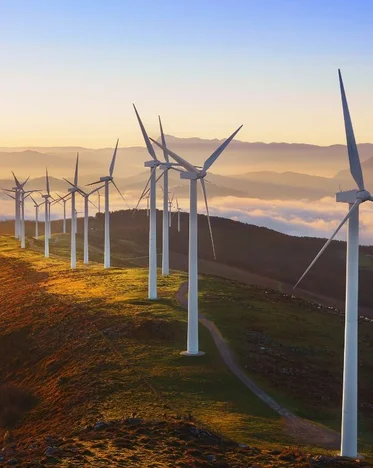
Environmental vision
Power transfer for wind
Mersen's environmental vision for power transfer is particularly impactful in the wind energy sector, where we aim to enhance the sustainability and efficiency of wind turbines. Our commitment to environmental stewardship is reflected in the design and deployment of advanced electrical carbon solutions that optimize energy output while reducing the ecological footprint of power generation.
By improving the reliability and efficiency of wind turbine systems, Mersen helps to increase the viability and spread of wind energy, a key renewable resource. Our products are designed not only to meet the current energy needs but to do so in a way that conserves resources for future generations, embodying our dedication to a more sustainable energy landscape. -
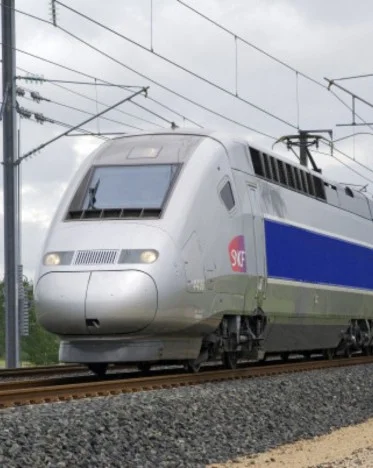
Innovation leadership
Current transfer and electrical carbon solutions
Mersen is recognized for its innovation leadership in the field of current transfer and electrical carbon solutions. We continually push the boundaries of technology and performance, developing new materials and processes that set industry standards. Our focus on innovation enables us to offer products that provide not only enhanced performance and reliability but also incorporate the latest advancements in electrical and thermal management.
This leadership is evident in our proactive approach to addressing the evolving challenges faced by industries worldwide, from increasing energy efficiency to reducing environmental impact. By investing in research and development, Mersen ensures that our solutions lead the market in both innovation and quality, empowering our customers with the tools they need to succeed in a competitive landscape. -
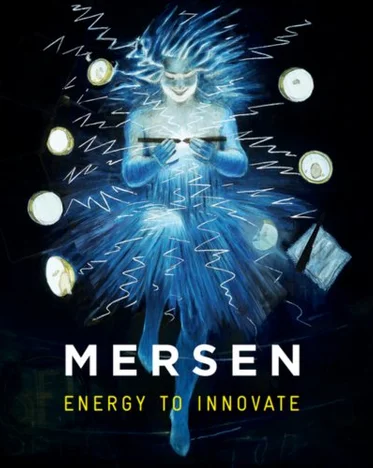
130 years of expertise
Current transfer
With a rich history spanning over 130 years, Mersen has established itself as a pillar of expertise in the field of current transfer. This extensive experience has endowed us with unique insights and deep knowledge, allowing us to design and deliver highly specialized solutions that address the specific needs of our clients across various industries.
Our long-standing presence in the market is a testament to our ability to adapt and evolve, continually enhancing our products to meet the changing demands of technology and industry. This depth of expertise not only instills confidence in our customers but also solidifies our position as a trusted leader in electrical solutions, providing reliable, high-quality solutions that stand the test of time
-
-
Frequently asked questions
Current transfer and electrical carbon solutions
-
What types are recommended for efficient power transfer for rail (rolling stock)?
For rolling stock in the railway industry, we recommend carbon brushes and pantograph contact strips designed specifically for high conductivity and durability under the dynamic conditions of rail transport. These components ensure consistent and efficient power transfer, critical for the smooth and reliable operation of both urban transit systems and long-distance rail services.
-
What are the key properties of electrical carbon for aerospace?
The key properties of electrical carbon for aerospace include:
- high thermal stability
- excellent electrical conductivity
- resistance to environmental stressors such as vibration and extreme temperatures.
These characteristics ensure reliable performance in critical aerospace applications, including power generation, electrical distribution systems, and safety-critical components where consistent electrical contact is vital.
-
What are the maintenance requirements for electrical carbon components in rail vehicles?
The maintenance requirements for electrical carbon components in rolling stock typically involve regular inspections to ensure proper alignment and pressure of carbon brushes, cleaning to prevent dust build-up, and timely replacement to avoid excessive wear and tear. Such maintenance helps maintain optimal conductivity and extends the lifespan of the components, ensuring reliable and efficient power transfer throughout the vehicle's service life.
-
How do pantograph contact strips enhance the connection between the pantograph and catenary in rolling stocks in the railway industry?
Pantograph contact strips are integral to the current transfer collection system in rolling stock for rails, facilitating a robust connection between the pantograph and the overhead catenary. Made from high-quality electrical carbon, these strips ensure effective and smooth electrical conductivity, crucial for the seamless operation of trains. The carbon strips' high durability and superior electrical properties minimize wear and electrical resistance, optimizing the efficiency of the current transfer, especially in high-speed rail applications.
-
-
Contact
Need to get information on our current transfer and electrical carbon applications?
